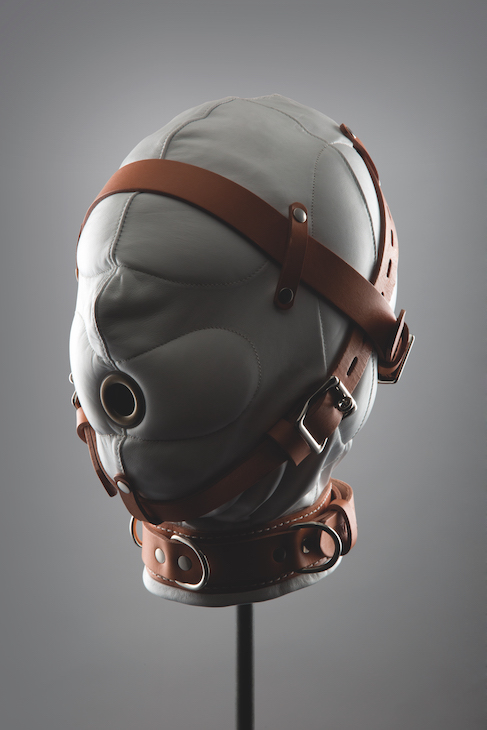George Henry Longly’s exhibition at the Palais de Tokyo this spring features eight Japanese armours as part of a dramatic installation. As the artist tells Apollo, they reflect his fascination with the impact of technology on the human body
What will ‘The Tissue Equivalent’, your solo exhibition in Paris, consist of?
It will be a very immersive exhibition, in which the whole space is covered with a floor print, and it incorporates audio, visual, lighting, and sculpture – including a film across 16 screens showing unexplored sea beds. Central to the exhibition are eight Japanese armours – my exhibition is staged alongside ‘Daimyo’, a collaboration between the Musée Guimet and the Palais de Tokyo – and, broadly speaking, is a response to these artefacts.
Daimyo armour (18th century), Japan. Private collection, France. Photo: © ToriiLinks

How did you approach these Japanese armours, and how have you chosen to incorporate them into your display?
I was slightly in awe of them at first; I thought about the ways in which we look and think about these objects now, particularly in a museum context. They are exquisite, powerful objects, so exuberant in their design – they skilfully incorporate metal and lacquer with woven fabric.
Daimyo armours are displayed sitting down – in my installation, all eight will be scattered throughout the space, sitting on floating pedestals on Perspex boxes. And, crucially, they won’t be behind glass. These are obviously very rare and expensive historical artefacts and, for practical reasons, there has to be a distance between them and the viewer. But I want people to be able to come as close as possible so they can experience them on the same level. I’m removing any sense of hierarchy or preconceived notions about how we should experience these objects.
How did the exhibition come about?
I think I was approached because of my interest in materiality and my interest in juxtaposing different material histories. I’ve also made work in the past which is concerned with clothing and self-expression. One of the themes of this exhibition is the projection of a self through technology, explored initially through these armours.
Industrial Debts (study of a sensory-deprivation mask) (2018), George Henry Longly. Photo: Alex Paganelli

Where does the title of the exhibition come from?
Life-size phantom torso dummies made of tissue equivalent plastic, and consisting of simulated organs, are sent into space to measure the effects of radiation on a human body. This exhibition is essentially about forces enacted on the body. My show ‘We All Love Your Life’ (2016), at Red Bull Studios, New York, drew on a book about NASA’s Skylab space station written in the 1970s. I was interested in the fact that outer space faces extreme conditions and that most people will only experience it though technology. It’s the same with the deep sea. My film features one image across 16 monitors – of deep-sea, robotically operated vehicles moving across the sea floor.
How does this exhibition relate to your wider interest in museology, and the ways in which we engage with, or look at, objects?
When I was working on my MA, my research paper was done at the Natural History Museum, and has always formed a very important backbone to how I understand and look at an exhibition. Museology underlines and reinforces
the sense of a subjective position; certain techniques will change, display method-ologies will become outmoded and new information will come to light which shifts the focus.
It seems like you’re also interested in playing with the status of objects?
Yes, I am. I like to play with the idea of reverence and irreverence towards objects – I’m always trying to think about how we can undermine and look at things in a different way. This isn’t just a crazy ‘let’s mess it all up’ approach, more a desire to question hierarchies, particularly around notions of taste.
Photo: Alex Paganelli

There’s a theatrical aspect to your exhibition. How much has the exhibition venue itself had an impact on your work?
The space in the Palais de Tokyo is a huge square room, 23m x 23m. It made
me want everything to be open. The only architecture that you encounter in the space are the four columns that separate one part of the room from the other, that splits it in half. I’m going to set up my own structures to suggest how the audience should move through this space: I’ll wrap spinning metal pedestals around two of the columns – to squeeze the audience through the show. Visitors are processed by this sort of ‘exhibition as machine’.
There will also be 101 metal barriers and bollards that come out of the walls, columns, and floor to stop you getting close to certain objects; I’ve worked with a company in France who make stanchions and bollards for street furniture. The bollards themselves have been put under extreme pressure; some have been twisted or bent and then painted. There’s the sense of a real battleground throughout the show.
Essentially, the show explores phenomenology, and the phenomenon of encounter – how an experience is felt by moving around a space. I’m also playing with the idea of sculpture as something that we move around.
You’re known for a very interdisciplinary practice…
I’m interested in how different aspects of culture sit together – such as visual art, fashion, music, club culture – although I’m more interested in how certain things rub up against each other. I don’t want to work with just one subject or material all the time.
‘The Tissue Equivalent’ is at the Palais de Tokyo, Paris, until 13 May.
From the February 2018 issue of Apollo. Preview and subscribe here



